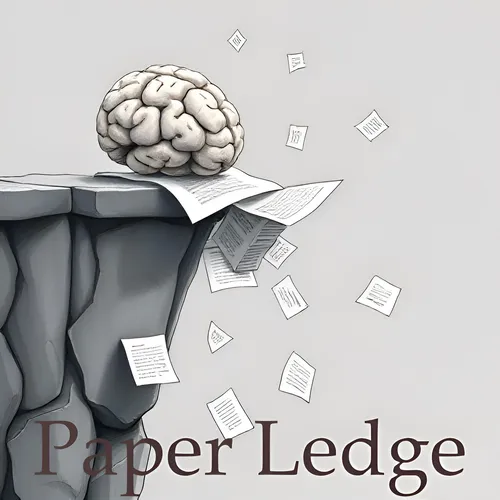Robotics - Mind and Motion Aligned A Joint Evaluation IsaacSim Benchmark for Task Planning and Low-Level Policies in Mobile Manipulation
- Author
- ernestasposkus
- Published
- Sat 23 Aug 2025
- Episode Link
- https://www.paperledge.com/e/robotics-mind-and-motion-aligned-a-joint-evaluation-isaacsim-benchmark-for-task-planning-and-low-level-policies-in-mobile-manipulation/
Alright learning crew, welcome back to PaperLedge! Today, we’re diving into some seriously cool research about robots…specifically, robots learning to cook! Well, sort of. It’s more about robots learning to follow instructions in a kitchen environment, but hey, maybe someday they’ll be whipping up gourmet meals for us.
Now, before you picture Rosie from the Jetsons, understand that the field of robotics and embodied AI (that's artificial intelligence that lives inside a body, like a robot) has a bit of a disconnect. Imagine you're teaching someone to bake a cake. On one hand, you could give them a detailed recipe – that's like high-level language instruction. But that assumes they already know how to crack an egg, use an oven, and not set the kitchen on fire! On the other hand, you could focus solely on teaching them each individual movement – "lift your arm, rotate your wrist, open your hand" – but that's only teaching them basic skills, not the whole cake-baking process!
This paper argues that current robot benchmarks – the things we use to measure how well a robot is doing – are often designed to test these skills separately. There are benchmarks for robots following complex instructions, but they often assume the robot can perfectly execute every physical movement. And there are benchmarks for testing a robot's fine motor skills, but they only involve very simple, one-step commands. There’s no benchmark to test if a robot can follow a recipe, while doing each step!
The researchers behind this paper noticed this gap and decided to do something about it. They created Kitchen-R. Think of it as a super-realistic, digital kitchen where robots can learn to cook (again, sort of!).
So, what exactly is Kitchen-R?
- It’s a digital twin – a virtual replica – of a kitchen, built using a fancy simulator called Isaac Sim.
- It's packed with over 500 different language instructions – everything from "put the milk in the fridge" to more complex tasks.
- It features a mobile manipulator robot. That's a robot that can move around and has an arm for manipulating objects.
Essentially, Kitchen-R is a virtual playground where robots can learn to understand instructions and then execute them in a realistic kitchen environment. The researchers even provide some baseline methods, which are essentially starting points for other researchers to build upon. They use a vision-language model for planning (like “seeing” the recipe and understanding what to do) and a diffusion policy for low-level control (like precisely moving the robot's arm to grab the milk).
"Kitchen-R bridges a key gap in embodied AI research, enabling more holistic and realistic benchmarking of language-guided robotic agents."
What’s really cool about Kitchen-R is that it allows researchers to evaluate different parts of the system independently, and the whole system together. You can test the planning module (the "brain") separately from the control policy (the "muscles"), and then see how well they work together as a team. This is crucial because a robot might be great at understanding what to do, but terrible at actually doing it, or vice versa!
So, why does this matter? Well, think about it. This research could pave the way for:
- More helpful robots in our homes: Imagine a robot that can actually follow your instructions to prepare a meal, clean the house, or help with chores.
- Robots that can assist in dangerous environments: From bomb disposal to disaster relief, robots that can understand and execute complex tasks could save lives.
- Better training for robots in manufacturing and logistics: Robots that can adapt to changing environments and follow instructions could improve efficiency and reduce errors.
This research is not just about robots in the kitchen. It’s about building robots that can truly understand and interact with the world around them. It's about creating robots that are not just tools, but partners.
Here are a few things I'm wondering about:
- How easily can Kitchen-R be adapted to other environments, like a workshop or a factory?
- What are the limitations of using a simulated environment? How well do robots trained in Kitchen-R translate to the real world?
- Could something like Kitchen-R be used to teach humans new skills, like cooking or assembling furniture?
That's all for today's PaperLedge. Let me know what you think of this paper in the comments. Until next time, keep learning!
Credit to Paper authors: Nikita Kachaev, Andrei Spiridonov, Andrey Gorodetsky, Kirill Muravyev, Nikita Oskolkov, Aditya Narendra, Vlad Shakhuro, Dmitry Makarov, Aleksandr I. Panov, Polina Fedotova, Alexey K. Kovalev
